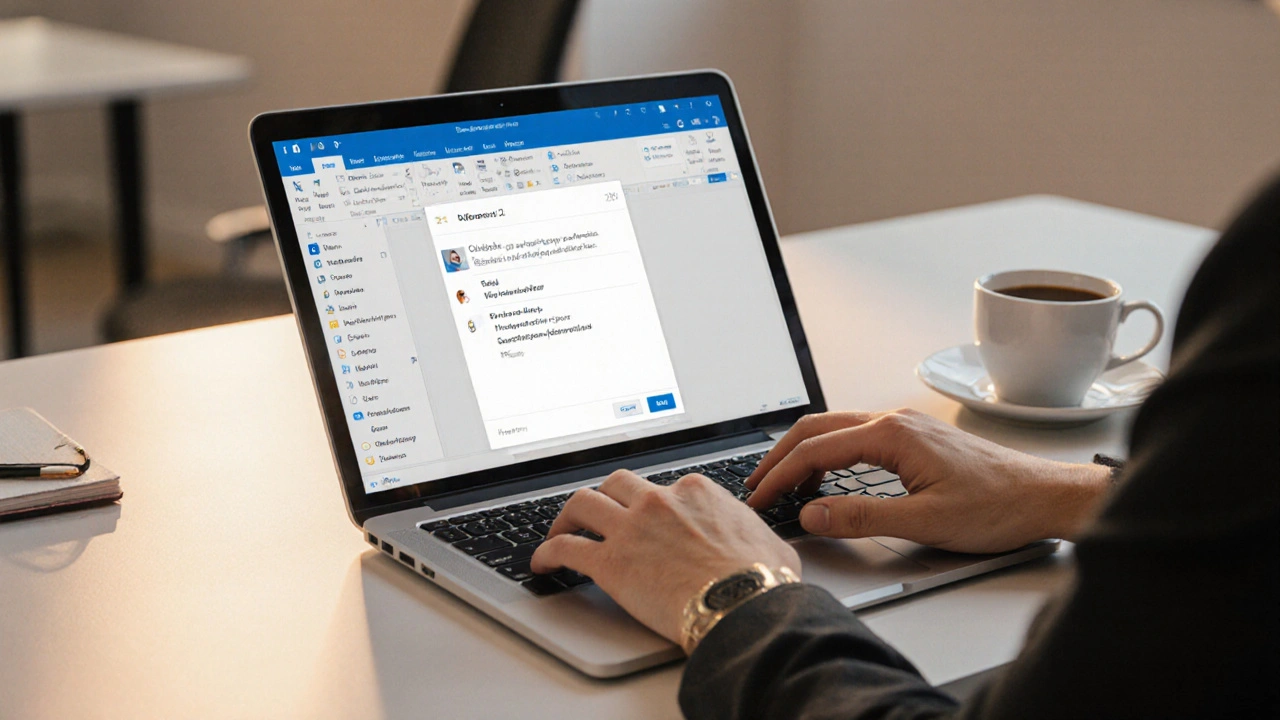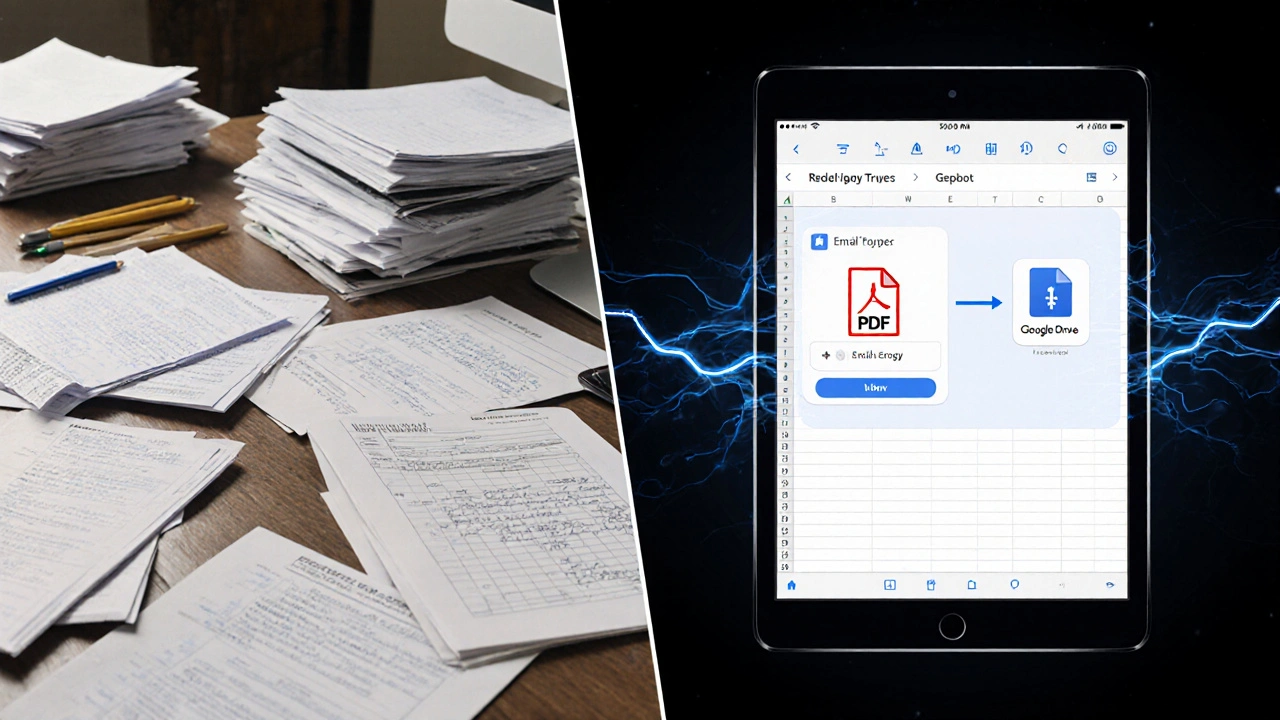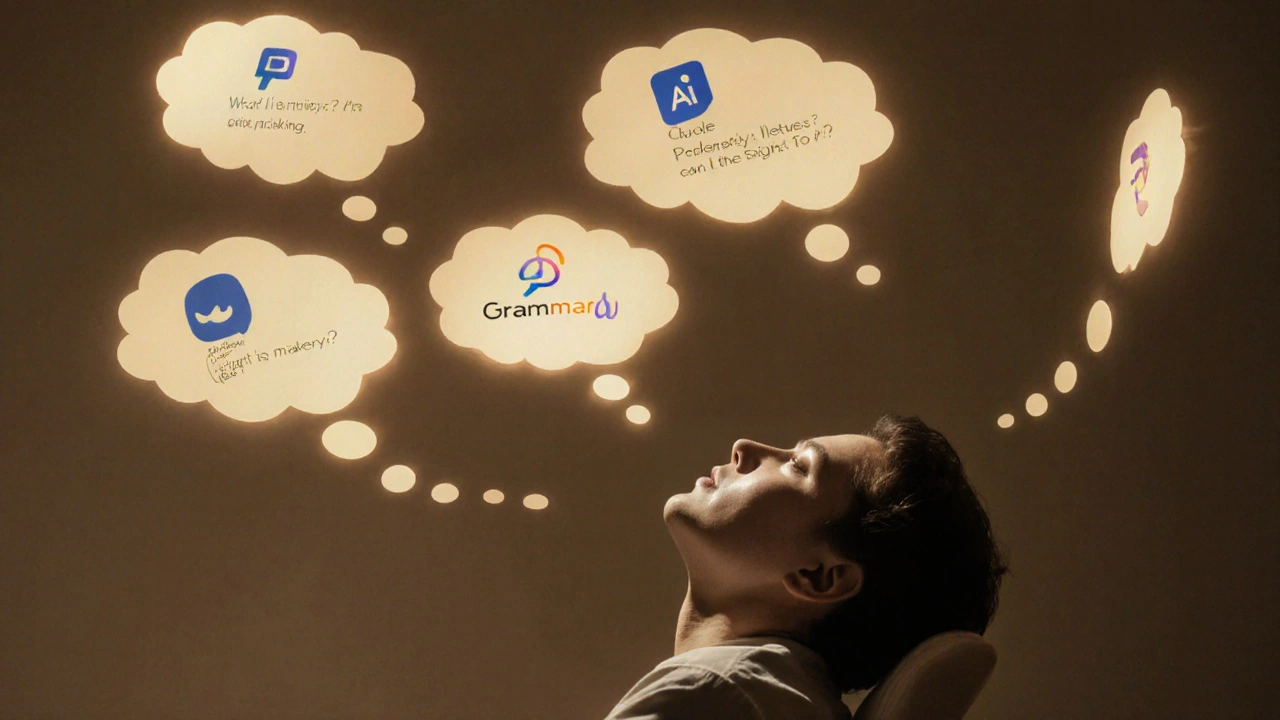AI Tricks: The Future of Digital Mastery

AI Time Savings Calculator
Your Current Workflow
Your AI Future
Your AI-Powered Results
That's enough time to: complete 5 major projects or read 15 books
Most people think AI is about self-driving cars and chatbots that sound like humans. But the real power of AI isn’t in the flashy demos-it’s in the quiet, daily tricks that turn ordinary users into digital power users. If you’re spending hours on repetitive tasks, drowning in email, or struggling to write clear reports, you’re not behind on technology-you’re just not using the right AI tricks yet.
Stop Typing, Start Commanding
Think about how much time you waste typing the same phrases over and over: "Can we reschedule?" "Thanks for the update." "Here’s the draft for review." Now imagine saying one sentence and having AI write the rest for you. That’s not magic. It’s AI tricks built into tools you already use.
Microsoft Copilot in Outlook doesn’t just suggest replies-it learns your tone. After a few weeks, it starts writing emails that sound exactly like you. Not generic. Not robotic. Yours. Same with Google’s Gemini in Docs. Type "Summarize this in three bullet points" and it does the work. No copy-paste. No rewording. Just results.
Try this right now: open any text editor. Type "Write a polite email to my manager asking for feedback on the Q3 report" and hit Enter. Watch what happens. If nothing pops up, turn on AI suggestions. You’re not lazy-you’re just using tools designed for the 2010s. The future doesn’t ask you to type faster. It asks you to think clearer.
Automate the Boring Stuff Before It Boring You
Every professional has a list of tasks they hate. Filling out forms. Sorting spreadsheets. Copying data from PDFs. These aren’t skills. They’re time traps.
Take Zapier or Make.com. You don’t need to code. Just say: "When I get an email with "invoice" in the subject, save the attachment to Google Drive and add the total to my spreadsheet." Done. No manual work. No mistakes. No reminders.
One marketing manager in Belfast automated 14 hours a week of data entry by connecting her email, Google Sheets, and Slack. She now spends that time on strategy. Not data cleaning. She didn’t get promoted because she worked harder. She got promoted because she stopped doing work that could be done by a machine.
Start small. Pick one repetitive task this week. Find an AI tool that handles it. Set it up. Watch it run. Then do it again next week with another task. In six months, you’ll have automated half your workload. That’s not a trick. That’s digital mastery.
AI That Reads Between the Lines
Most AI tools treat your input like a command. But the best ones treat it like a conversation.
Tools like Claude 3 or Perplexity don’t just answer questions-they ask clarifying ones. Ask them: "What’s the best way to improve team morale?" and they’ll reply: "Are you looking for quick wins or long-term culture change? Is your team remote or in-office?" They adapt. They learn. They help you think deeper.
This is the real shift: AI is no longer just a search engine with a voice. It’s a thinking partner. You don’t need to know the answer. You just need to ask the right question.
Try this: instead of asking "How do I write a better report?" ask "What’s the most common mistake people make in Q3 reports in my industry, and how can I avoid it?" The difference isn’t in the AI. It’s in how you use it.

Turn AI Into Your Personal Coach
Imagine having a coach who knows your writing style, your mistakes, your goals-and gives you feedback in real time.
Tools like Grammarly Premium and Writesonic don’t just correct grammar. They suggest tone adjustments. "This sounds too formal for your audience." "Try starting with a question to hook readers." "You’ve used the word "important" five times in two paragraphs. Try "critical" or "key" instead."
One software developer in Belfast used AI to review his internal documentation. After two weeks, his team stopped asking for clarifications. His reports went from "confusing" to "clear"-not because he became a better writer. Because AI trained him, one sentence at a time.
You don’t need to be a genius to master digital tools. You just need to let AI show you where you’re weak-and then help you fix it.
Stop Using AI Like a Calculator. Start Using It Like a Brain.
People treat AI like a calculator: type in a problem, get an answer. But the best users treat it like a brain extension.
Instead of asking "What’s the capital of France?" (which you already know), ask: "Compare the economic impact of Paris vs. Berlin as tech hubs in 2025." Or: "Summarize the last 10 years of AI policy in the EU and predict what changes might come next."
AI doesn’t replace your brain. It amplifies it. The more you use it to explore, connect ideas, and challenge assumptions, the sharper you become.
Try this: every morning, spend five minutes asking AI one open-ended question about your field. Not "how to do X," but "what am I missing?" Keep a notebook. After a month, you’ll have a list of insights no course or webinar ever gave you.

The Real Secret: Consistency Over Complexity
You don’t need to learn Python. You don’t need to fine-tune models. You don’t need to understand transformers or embeddings.
You just need to use AI every day-even for five minutes.
One teacher in Belfast started using AI to grade multiple-choice quizzes. Then she used it to draft lesson plans. Then she used it to generate discussion prompts. In six months, she cut her weekly prep time from 12 hours to 3. She didn’t become a tech expert. She just became consistent.
AI mastery isn’t about knowing everything. It’s about doing a little more every day. Writing one email with AI. Automating one task. Asking one deeper question. That’s how you build digital mastery-not with a course, but with habits.
What Happens When Everyone Uses AI?
Here’s the truth: AI won’t replace you. But someone who uses AI well will.
Companies aren’t hiring AI experts. They’re hiring people who get more done in less time. Who spot patterns others miss. Who turn vague ideas into clear actions. That’s not luck. That’s digital mastery.
The future isn’t about who has the most powerful AI. It’s about who uses the tools they already have the best.
You don’t need to wait for the next breakthrough. Start now. Use AI to write one thing today. Automate one thing this week. Ask one deeper question tomorrow.
The future of digital mastery isn’t far away. It’s in your inbox. In your notes app. In your browser. You just have to start using it.
Do I need to know how to code to use AI tricks?
No. Most AI tools today-like Copilot, Gemini, Grammarly, and Zapier-are designed for non-developers. You don’t need to write a single line of code. You just need to know how to ask clear questions and use buttons like "Summarize," "Rewrite," or "Automate." The tools do the rest.
Are these AI tricks safe for sensitive work?
Yes, if you use trusted tools with enterprise-grade privacy. Stick to platforms like Microsoft 365, Google Workspace, or Notion AI-they encrypt your data and don’t use it to train public models. Avoid pasting confidential client info into free chatbots like ChatGPT unless you’re sure of their privacy policy. Always check your company’s AI guidelines before using any tool.
Can AI really help me get promoted?
Absolutely. People who use AI to work smarter get noticed. They deliver faster. They spot errors others miss. They suggest better ideas. One survey of 2,000 professionals found that those using AI daily were 40% more likely to receive a promotion or raise in the past year. It’s not about the tool-it’s about the results you produce with it.
What’s the first AI trick I should try today?
Open your email. Find one message you’ve been putting off. Use your AI assistant to draft a reply. Don’t just copy it-edit it to sound like you. Send it. That’s it. You’ve just automated part of your workday. Do this once a day for a week, and you’ll save 5-10 hours a month. Small steps build real change.
Will AI make my job obsolete?
Not if you learn to use it. AI replaces tasks, not roles. The jobs that disappear are the ones built entirely on repetitive work. The jobs that grow are the ones that require judgment, creativity, and communication-and AI helps you do those better. Your value isn’t in doing the same thing faster. It’s in doing the right thing, smarter.
If you’re reading this, you’re already ahead of most people. You didn’t wait for AI to come to you-you’re looking for ways to use it. That’s the first step to digital mastery. Now go use it.